
 Bill Burhans served as a tour officer with the USMLM Air Team from July 1971 to June 1975. He returned in 1979 to command Detachment 16,
7113th Special Activities Squadron (the Air Team), departing in early spring 1980 following a December 1979 Soviet-originated nasty incident.
He recalls for us a routine tour to Altenburg airfield that gave unexpected results.
Bill Burhans served as a tour officer with the USMLM Air Team from July 1971 to June 1975. He returned in 1979 to command Detachment 16,
7113th Special Activities Squadron (the Air Team), departing in early spring 1980 following a December 1979 Soviet-originated nasty incident.
He recalls for us a routine tour to Altenburg airfield that gave unexpected results.
On March 16, 1973 the mission for this particular day was to check for and observe any flying activity that might take place at Altenburg Soviet Airfield, home base of the Soviet 296th Fighter Aviation Regiment equipped with MiG-21SMT FISHBED K fighter-bombers. Technical Sergeant Nick Netter and I had carefully worked our way into that area quite early in the morning and felt fairly certain that we had not been surveilled or followed into the airfield area. This was a scheduled flying day for this unit and the weather was forecast to be good. We selected an observation point (OP) in a cherry orchard on a hill on the edge of the village of Oberleupten, about 2-½ miles southeast of the city of Altenburg.
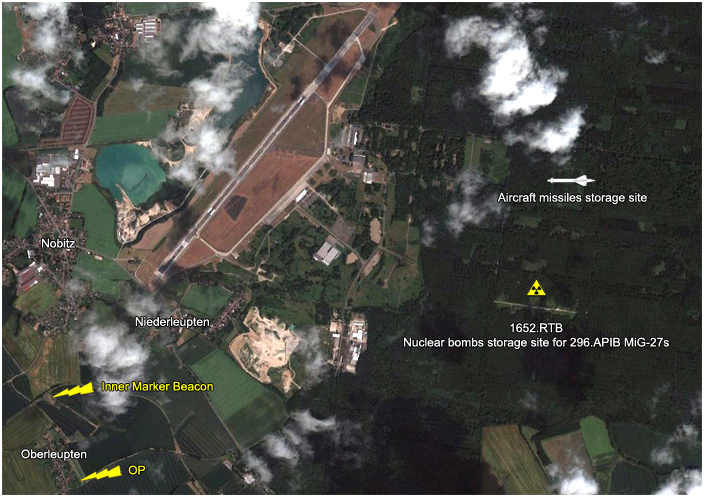
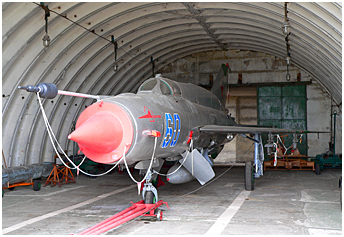
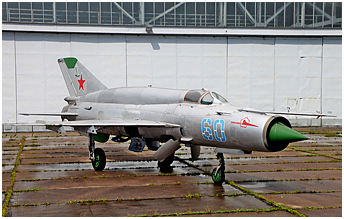 As best we could tell from this vantage point, little or nothing was happening on the airfield. As we kept note of the situation around us and ardently watched for hostile surveillance,
Nick and I noticed that our Ford Bronco looked very strange. It was tilted a bit at a steep angle for some reason. We quickly found out that the right rear wheel was in a very soft spot
and the tire gradually was sinking deep into the dirt. Slowly but surely, the car was tipping over! As I leaned against the vehicle in an effort to keep it upright, Nick quickly got behind
the wheel, started the engine and carefully and gently began to rock the Bronco back and forth to free the wheel.
As we were extricating the vehicle, we noticed a man looking around the corner of the building nearest to us. He could have been just an inquisitive villager, but then again he might well
have been a Stasi nark. Nick and I were discussing whether he represented a sufficient threat to cause us to vacate the area or not when the sounds of aircraft engines began to be heard.
We decided to wait it out to see what happened, prepared at all times to beat a hasty retreat should the situation so warrant. As was our normal procedure, when we chose our OP, we ensured
we had several routes via which we could escape, if necessary.
As best we could tell from this vantage point, little or nothing was happening on the airfield. As we kept note of the situation around us and ardently watched for hostile surveillance,
Nick and I noticed that our Ford Bronco looked very strange. It was tilted a bit at a steep angle for some reason. We quickly found out that the right rear wheel was in a very soft spot
and the tire gradually was sinking deep into the dirt. Slowly but surely, the car was tipping over! As I leaned against the vehicle in an effort to keep it upright, Nick quickly got behind
the wheel, started the engine and carefully and gently began to rock the Bronco back and forth to free the wheel.
As we were extricating the vehicle, we noticed a man looking around the corner of the building nearest to us. He could have been just an inquisitive villager, but then again he might well
have been a Stasi nark. Nick and I were discussing whether he represented a sufficient threat to cause us to vacate the area or not when the sounds of aircraft engines began to be heard.
We decided to wait it out to see what happened, prepared at all times to beat a hasty retreat should the situation so warrant. As was our normal procedure, when we chose our OP, we ensured
we had several routes via which we could escape, if necessary.
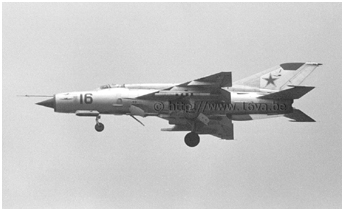
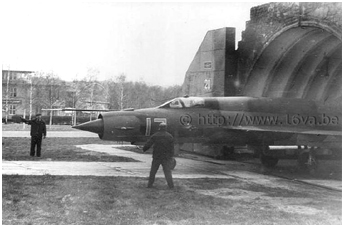 Since the elevation at the OP was 722 feet above sea level and we were only 1 mile from the end of the runway (where the elevation was 620 feet above sea level), we were able to look down
directly onto the airfield. We had selected the location for this reason, and because of the prevailing winds. Should the anticipated flying program start, aircraft would be landing from our
left to our right above us against the wind. Since we were so close to the inner marker beacon (it was about one-half mile away), aircraft on final approach would be at a low altitude, about
600 feet. Nick and I waited eagerly for things to happen. Naturally, we expected to see aircraft taxiing towards us from their hangarettes and the final inspection area, then take off away
from us. That was not to be the case this particular day.
What we did get to see was three flights comprising three aircraft each taxi towards the northeast end of the runway and take off with the wind to the southwest towards us. Two more
three-aircraft flights immediately followed, and took off to the northeast into the wind. These 15 aircraft in groups of three, which represented one of the squadrons that comprised
that fighter regiment (1), cleared the base in 11 minutes. After some 40 minutes, the aircraft returned to the base; we observed them
at a distance landing to the southwest.
Nick and I were the first USMLM Air Team personnel to witness an important stage of a typical air defense exercise - an airfield "flush" - action taken to ensure an entire flying unit
rapidly departs its home base to avoid destruction from an impending enemy attack...
Since the elevation at the OP was 722 feet above sea level and we were only 1 mile from the end of the runway (where the elevation was 620 feet above sea level), we were able to look down
directly onto the airfield. We had selected the location for this reason, and because of the prevailing winds. Should the anticipated flying program start, aircraft would be landing from our
left to our right above us against the wind. Since we were so close to the inner marker beacon (it was about one-half mile away), aircraft on final approach would be at a low altitude, about
600 feet. Nick and I waited eagerly for things to happen. Naturally, we expected to see aircraft taxiing towards us from their hangarettes and the final inspection area, then take off away
from us. That was not to be the case this particular day.
What we did get to see was three flights comprising three aircraft each taxi towards the northeast end of the runway and take off with the wind to the southwest towards us. Two more
three-aircraft flights immediately followed, and took off to the northeast into the wind. These 15 aircraft in groups of three, which represented one of the squadrons that comprised
that fighter regiment (1), cleared the base in 11 minutes. After some 40 minutes, the aircraft returned to the base; we observed them
at a distance landing to the southwest.
Nick and I were the first USMLM Air Team personnel to witness an important stage of a typical air defense exercise - an airfield "flush" - action taken to ensure an entire flying unit
rapidly departs its home base to avoid destruction from an impending enemy attack...
| Altenburg, Nevada |
notes
(1) The 296.IAP was a fighter aviation regiment with a nuclear role. See > Special weapons.
It became a fighter-bomber aviation regiment (APIB)
when it received its first MiG-27s in 1982.
 |
Plan du site - Sitemap |  |
